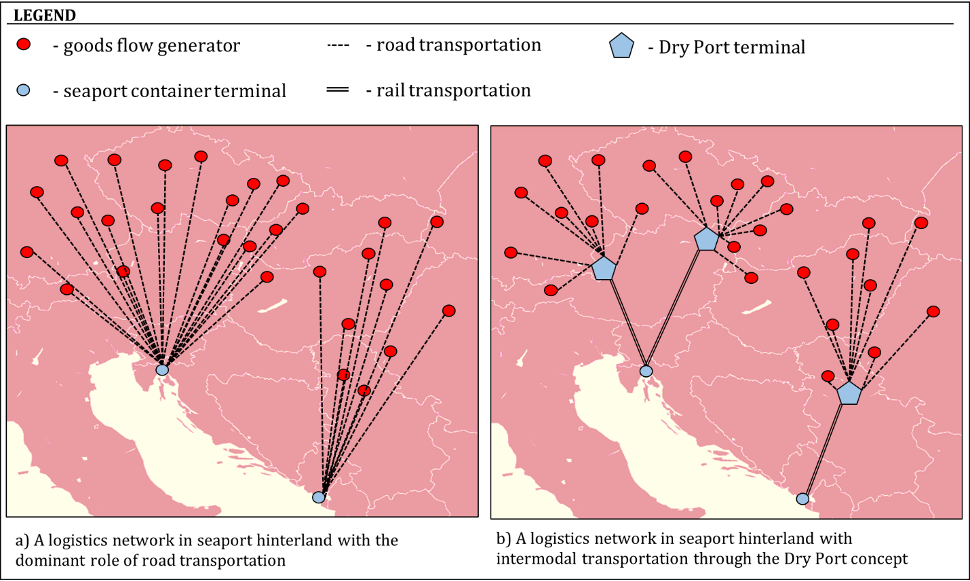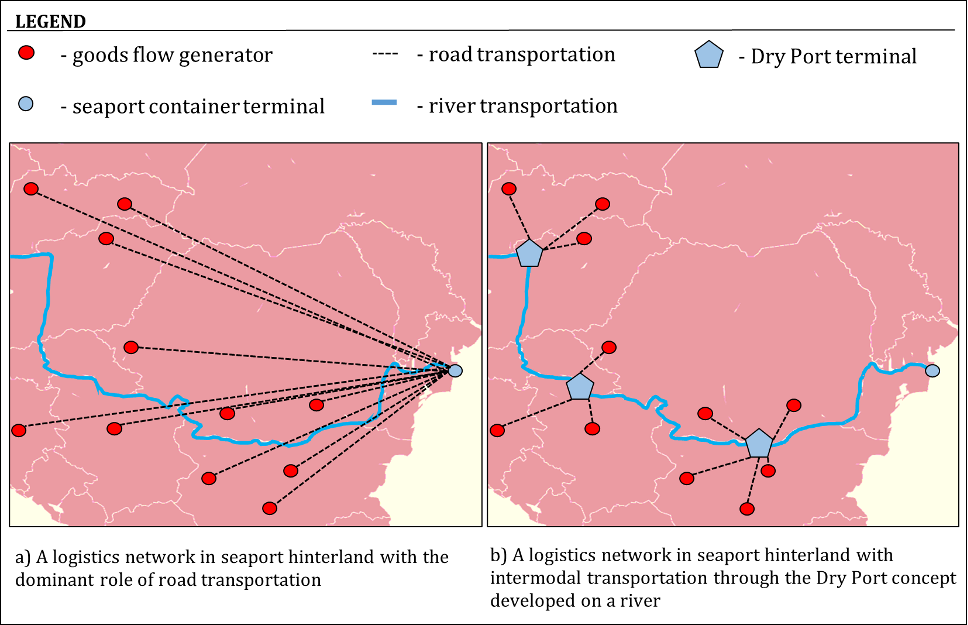
Think Tank
Making International Logistics Sustainable: The Dry Port Concept

Photo: iStock.com/TarikVision
In the age of globalization, ocean shipping is essential to enabling both the regional and intercontinental flow of goods.
Large seaport container terminals play a central role in the transfer of cargo between ocean and land. In the process, they become pinch points in the supply chain. With the volume of intercontinental goods flows expected to double between 2017 and 2025, there’s a need for bigger ships, putting even more pressure on existing marine terminal infrastructure.
Growing operational inefficiencies at seaports cause similar problems in the hinterland. Truckers are grappling with traffic congestion, the rising cost of energy and growing environmental concerns. According to official Eurostat data, in the year 2019, road transportation accounted for 76.3% of European goods flow; rail transportation 17.6%, and inland waterway transportation just 6.1%.
The only way to mitigate the negative effects of logistics activities in seaport cities and inland is to develop intermodal transportation. By shifting the movement of ocean containers onto rail instead of road, multiple heavy trucks can be replaced by a single freight train. Rail is a more sustainable and cost-efficient alternative to road transport. (The same goes for inland waterway transportation, although it’s limited to regions with navigable rivers.)
The best approach to encouraging intermodal transportation in the hinterland is through the dry port concept. It serves as an inland extension of the seaport, linked by rail (Figure 1).

Figure 1: Seaport hinterland network with a) the dominant role of road transportation, and b) dry ports.
A dry port improves the performance of seaport container terminals through better synchronization between seaports and the hinterland. It ensures that seaports have the required capacity, increases the services that seaports can offer, and enables the handling of greater container volumes. Dry ports currently in operation include facilities in Sweden, the U.S., Australia and India. Dry ports can also link seaports to river transportation (Figure 2) and terminals (Figure 3).
 Figure 2: Seaport hinterland network with a) the dominant role of road transportation, and b) dry ports connecting river transportation with the seaport.
Figure 2: Seaport hinterland network with a) the dominant role of road transportation, and b) dry ports connecting river transportation with the seaport.

Figure 3. Regional logistics network with a) the dominant role of road transportation, and b) dry ports developed for river container terminals.
Dry port systems allow for the consolidation of goods flows in both the early and final stages of supply chains, as well as leading to better modal redistribution through less dependence on road transport. Consequently, the concept removes unnecessary road traffic in seaport cities. Regional logistics networks become more efficient and sustainable, and can attract greater goods flows. Moreover, regions with competitive logistics experience greater economic development.
For a seaport, it’s more efficient to consolidate goods flows instead of dealing with individual trucks. Better synchronization means improved utilization of resources, and faster transit through the supply chain.
Dry ports represent a base point for further development of intermodal transportation. Making them a reality, though, will require international collaboration among the scientific community, experts in logistics, and local and regional governments.
Milovan Kovač is a data analyst at the Institute for Scientific Information, and Gali Halevi is director of the Institute for Scientific Information , with Clarivate.






